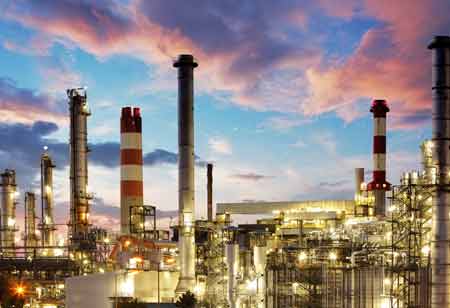Thank you for Subscribing to Energy Business Review Weekly Brief
From Crude Oil to Chemicals: Adapting Refineries to Fluctuating Demand
Many analysts predict that the global energy transition will soon lead to a peak in the consumption of oil-based fuels, followed by a decline.

By
Energy Business Review | Thursday, May 18, 2023
Stay ahead of the industry with exclusive feature stories on the top companies, expert insights and the latest news delivered straight to your inbox. Subscribe today.
The energy transition will reduce the demand for oil products while increasing the opportunities to meet the rising demand for petrochemicals.
FREMONT, CA: Many analysts predict that the global energy transition will soon lead to a peak in the consumption of oil-based fuels, followed by a decline. The transportation industry is at the forefront of this trend, with total global demand expected to peak within the next one to two years before declining gradually. The greatest impact will be felt by gasoline because it is primarily used in light-duty passenger vehicles, whose market is shifting toward electric vehicles. In addition, these vehicles are subject to improvements in fuel economy and shifting consumer mobility preferences.
In contrast, petrochemical feedstocks will continue to be in high demand. The primary petrochemical feedstocks derived from petroleum are ethane, liquid petroleum gas (LPG), and naphtha. These are predominantly employed in manufacturing polymers for plastics, synthetic fibers, and other petrochemical intermediates. With rising global wealth, the demand for these items will continue to rise.
These two developments present refiners around the globe with a double challenge. Reduced demand reduces the need for refining capacity. Concurrently, the remaining refining capacity must adapt to a change in product mix to meet petrochemical demand. Refiners must find ways to produce significantly less gasoline and diesel and more jet fuel and petrochemical feedstocks.
Ahead-of-the-curve refiners are already seeking opportunities to adjust or modify their production modes to meet the rising demand for petrochemicals, such as by increasing their output of naphtha and propylene, and reformate, the building blocks of other petrochemicals. (Refineries already produce a small number of petrochemical feedstocks, but typically at most 10 percent of total output.)
Refiners must fundamentally reconsider the design and operation of refineries. Given the time required to make capital investments and construct new facilities, they should initiate this review immediately.
Reconsidering refinery processes
Nearly 100 million barrels of crude oil can be refined daily by refiners worldwide. As global demand declines, refinery utilization in Western Europe and Asia is anticipated to fall. By the middle of this decade, the current utilization rate of 85 percent in these markets could fall to the low 70s. Due to locational advantages for export markets and crude supply, North American refinery utilization will increase marginally. However, all markets will experience a significant decline in profit margins due to the general decline in utilization.
Overall, the decline in utilization and profitability could result in the closure of less efficient plants and less ability to adapt to new demands. In this scenario, most existing plants continue to operate despite mounting pressure to adapt to new conditions, despite narrow margins and diminished cash flows.
Few refiners have begun the transition in earnest, although many are contemplating a shift away from refining crude primarily into fuels and towards refining crude into chemicals. A part of the difficulty is that there are numerous approaches, and they all require substantial capital investment. There are three ways for players to increase the petrochemical yield of their refinery operations: altering individual process units, altering the mix of process units, and constructing more crude-to-chemical plants.
Innovative process technology
The processing unit that receives the most attention is the fluid catalytic cracker (FCC), which has been the workhorse of refining for decades. The FCC is a cracking unit that transforms vacuum gasoil, a low-value, high-density component of crude oil, into more valuable products, such as gasoline. Typically, FCC production accounts for approximately 40 percent of the total gasoline pool. The gasoline produced by units that utilize FCC products as feedstock for processes such as alkylation contributes more than fifty percent to the pool. Few FCCs are designed to separate naphtha and aromatic materials for use as petrochemical feedstock. FCC gasoline contains naphtha and aromatic materials that could be separated for use as petrochemical feedstock. The FCC also produces light olefins, which some refiners can separate for use as petrochemical feedstock. However, the average output is relatively low. Refiners have adopted catalysts that produce higher olefin yields, but output typically peaks at 10 to 15 percent of the total.
The development of new technologies could enable FCCs to produce significantly higher petrochemical yields, which could increase the production of olefins, aromatics, and steam cracker feeds such as LPG and naphtha.
Extremely severe FCC: This method optimizes propylene yield by modifying catalysts, operations, and unit design, but it is nonetheless a conventional technology. It enables refineries to produce petrochemicals from heavy oils by transforming low-value refinery streams into high-value products suited for integrated processes.
FCC regarding steam cracking: Reliance Industries of India plans to use steam cracking in its innovative multi-feed cracker. The company aims to maximize monomer production by catalytically upgrading a refinery's unsaturated light and heavy streams. When operational, the unit's feedstock is anticipated to yield approximately 70 percent petrochemicals (24 percent ethylene; 33 percent propylene; and 14 percent benzene, toluene, and xylene).






